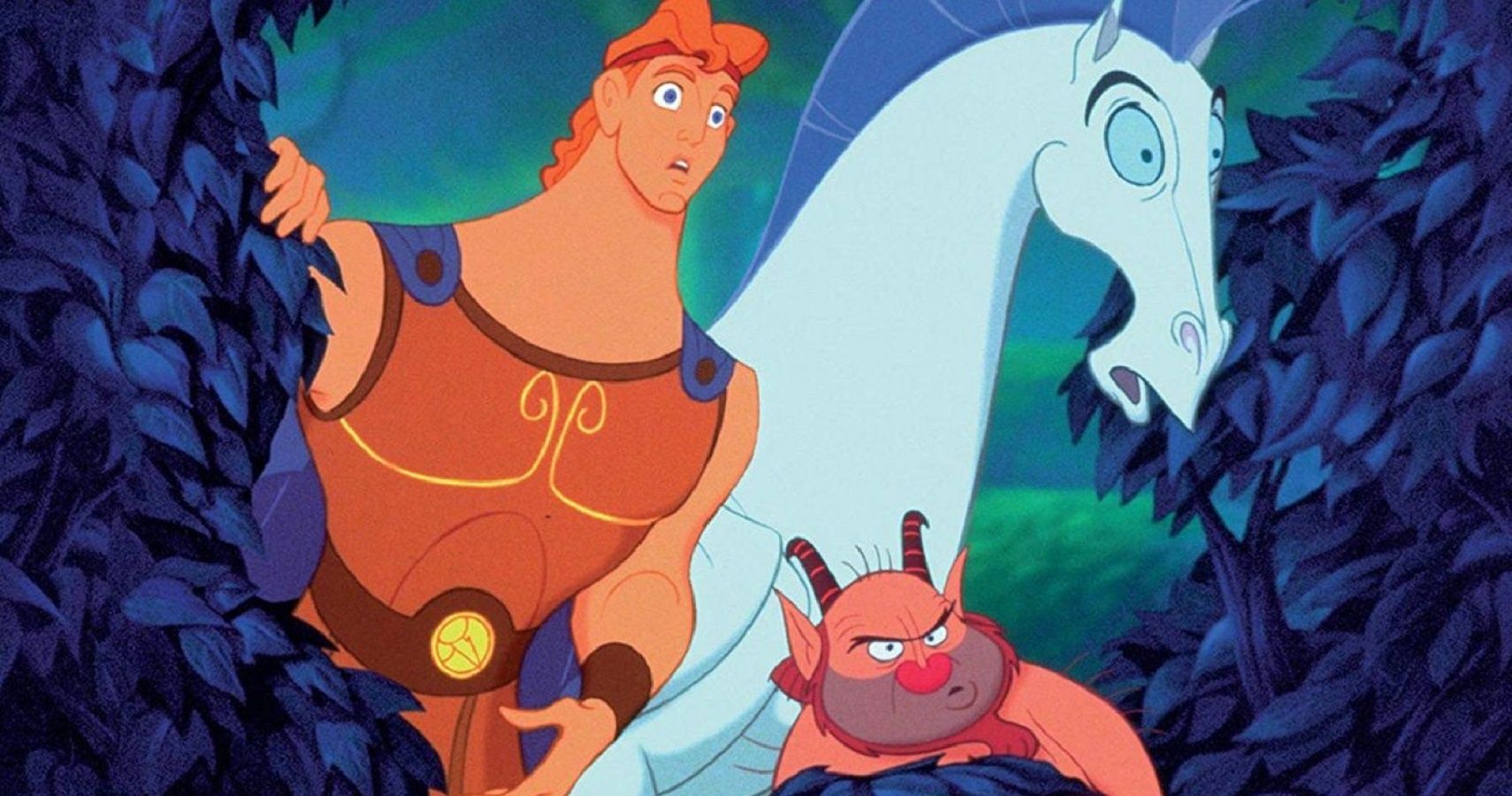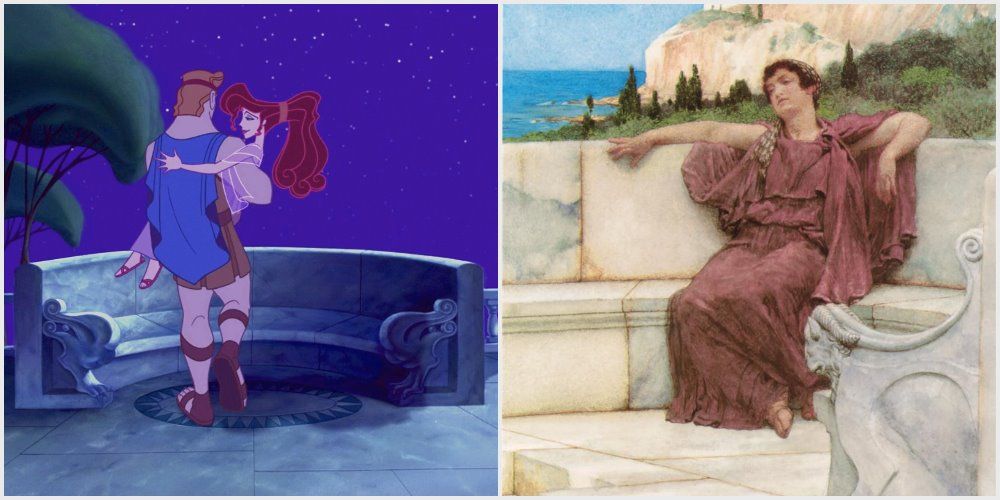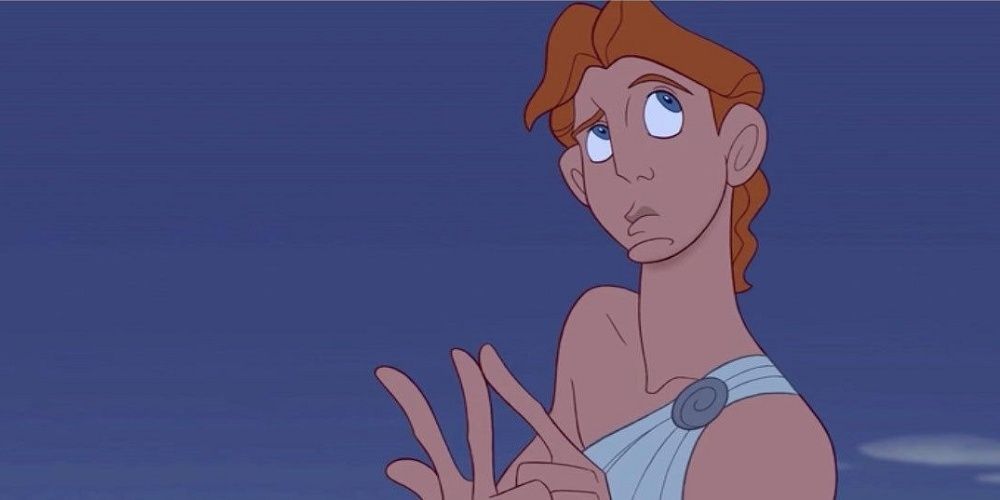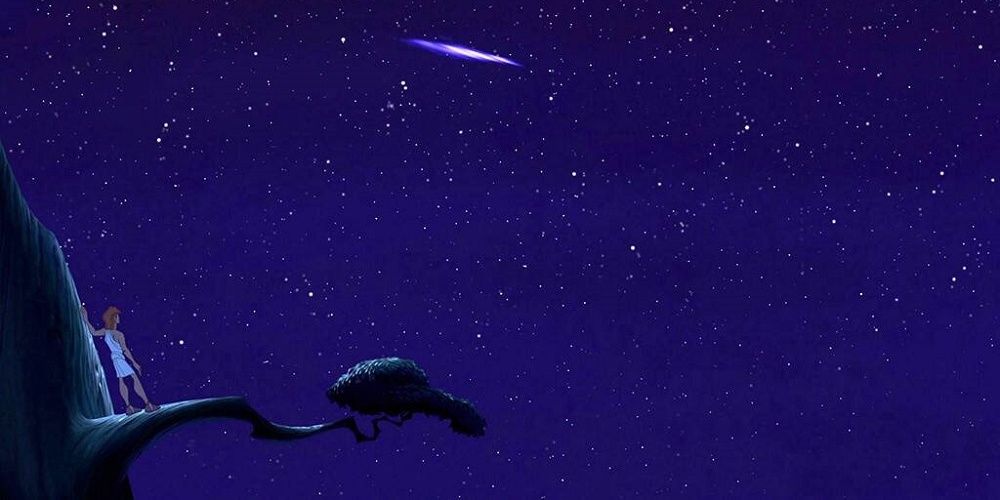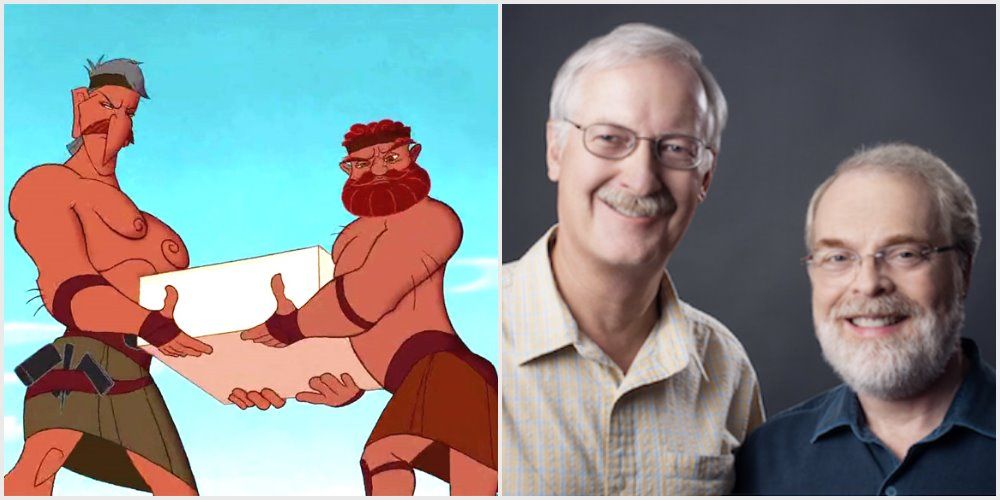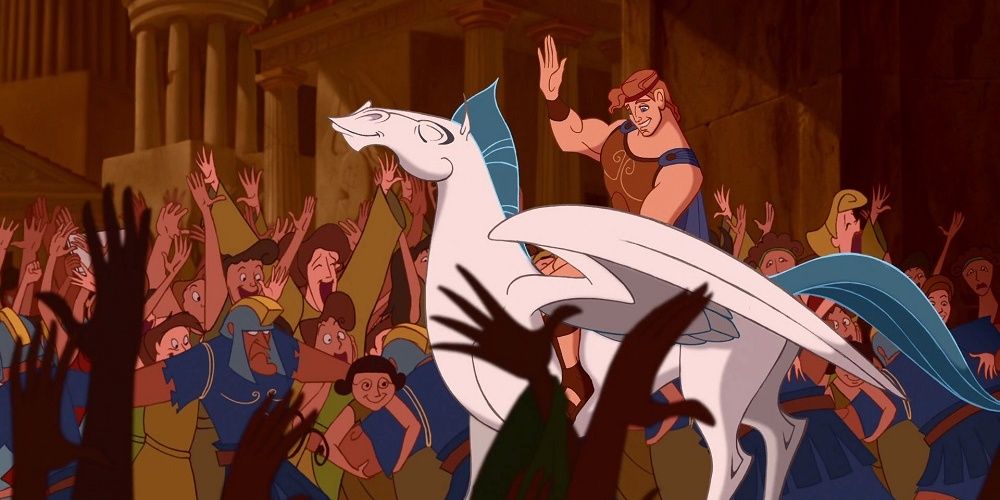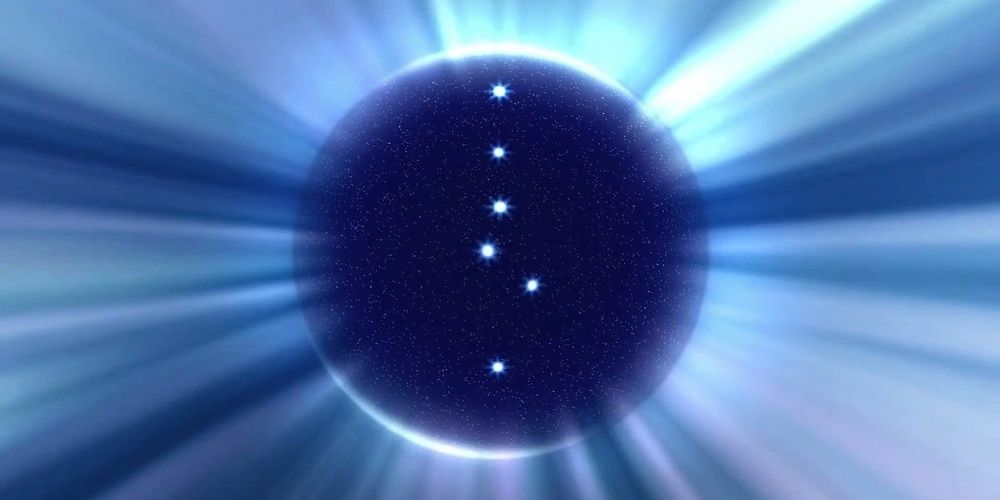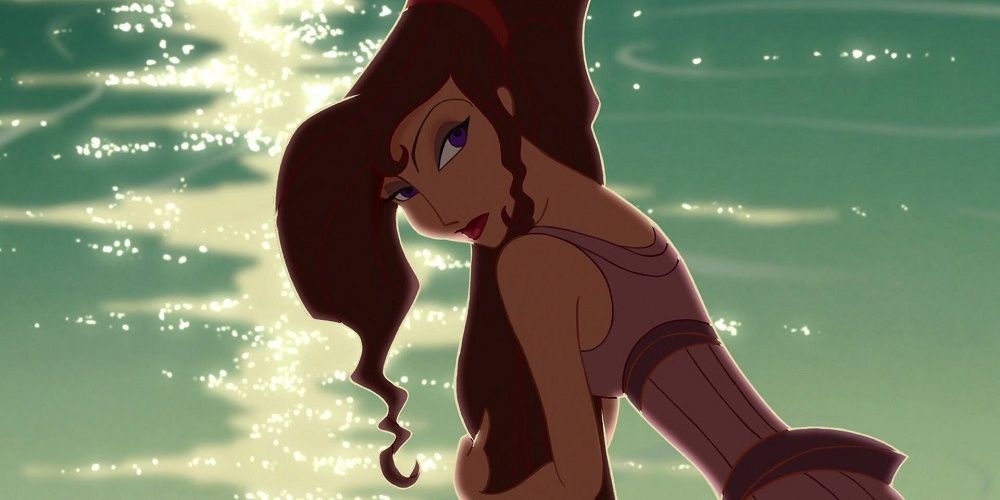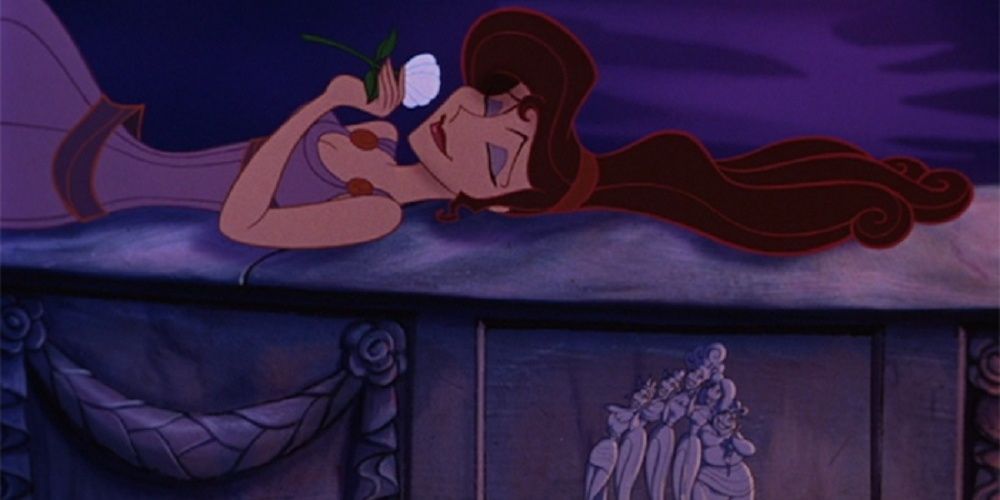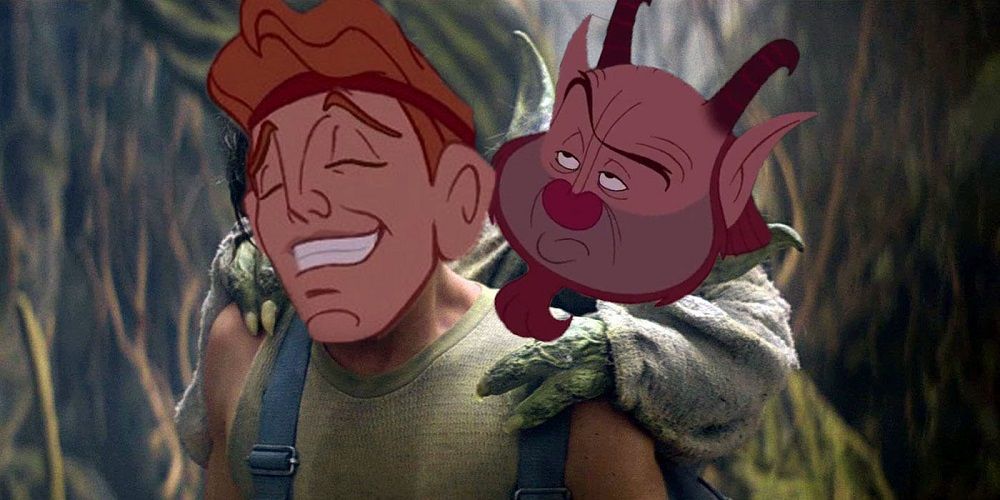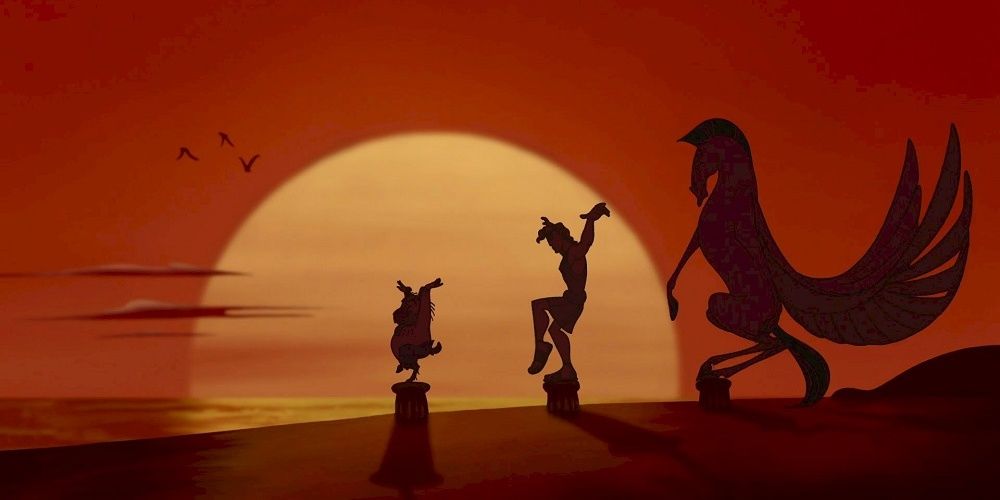Disney's Hercules released in 1997 and is a loose adaptation of the Greek myth. Like many Disney films, it chooses to omit the darker elements of the story and instead offers up a much happier ending. Animators were inspired by Greek styles and provided unique animated visuals, for which it was nominated for many accolades, and won multiple awards.
With the recent news that Disney's Hercules is getting the live-action treatment, it's time to take a look back at the original animation and clue you in on some trivia you probably didn't know.
The Bench That Isn't a Bench
When Hercules and Megara are on a date, Meg pretends to trip down the steps and Hercules catches her and places her onto what looks like a stone bench. However, it isn't a stone bench, it is actually a schola; a semicircular bench tomb that was common in Pompeii. Fans like to interpret this as not only a clue to Meg's link to Hades and the underworld but also a foreshadowing of her death because the only other scene where Hercules carries her this way is when he has retrieved her soul.
Schola benches were a favorite of artist Sir Lawrence Alma-Tadema, seen here in his painting "Dolce far Niente". More than one of Alma-Tadema's paintings feature women lounging on these tomb benches and rather strikingly they are in similar color-schemes to Megara's clothing.
Two Words
When Hercules first meets Phil and is begging the satyr to train Hercules to become a hero, Phil answers with, "Two words: I am retired." Hercules is then seen counting his fingers in confusion as this is obviously three words. However, "I am retired" in Greek is "Eímai syntaxioúchos," which is actually two words.
This is a brilliant, witty bit of humor added in by Disney to give viewers an extra chuckle when they realize the truth of Phil's words. Another bit of Greek language humor added in is when later on the kids are trapped beneath a rock and someone says, "Someone call IXII," which are the Roman numerals for the emergency number, 911.
That's No Shooting Star
During Hercules's song "I Can Go the Distance," the young wannabe hero climbs a tree and watches a shooting star as it flies across the night sky. Director of Hercules, Ron Clements, explained that the idea behind the shooting star was actually that it was Pegasus watching over his old friend until he could re-join him properly once again.
A shooting star is also seen by Meg and Hercules while they are on their date, could it be that Pegasus is watching over his friend on the sly even then as he doesn't trust Meg?
Familiar Faces
Near the beginning of the film, we see a young Hercules racing into the market with a cart in tow, where he then collides with some builders moving stones to make an arch. Two of these builders are actually made to look like the film's directors Ron Clements and John Musker. Interestingly enough, there are other Disney characters made to look like their real-life counterparts, such as Phil being based on the appearance of his voice actor, Danny DeVito.
It's a reoccurring theme that these two Disney directors hide as easter eggs within their films; they have also appeared in Moana, Aladdin, Treasure Planet, The Little Mermaid, and The Princess and the Frog.
The New York Parallel
Hercules visits Thebes often within the film and this famous Greek city is paralleled to New York. This is emphasized many times throughout the film, for instance, Phil refers to Thebes as "The Big Olive," similar to how New York is "The Big Apple" but utilizing Thebe's fame for olives.
Phil makes other pop culture references to tie the two together; such as using Frank Sinatra's lyrics to New York, New York "If you can make it there you can make it anywhere," in reference to Thebes. Phil is also nearly run over by a cart in Thebes and exclaims, "Hey, I'm walkin' here!" -- a reference to the film Midnight Cowboy, which is set in New York.
Only Six Planets
Early on in the film, Hades visits with the Fates and they tell him about a prophecy foretelling Hades's ascension to the throne of Olympus, with the caveat that if Hercules fights that Hades will fail.
Part of the prophecy is that in precisely 18 years the planets will align, but the vision only shows six planets. This is because the Ancient Greeks were only aware of five other planets besides Earth, as these were the only planets that could be seen with the naked eye. Uranus can be seen very rarely under totally ideal conditions but was not discovered until 1781.
Megara is Four Women in One
In classic mythology, Hercules actually had four different wives. Of course, Disney wasn't going to put all four marriages into the film, but what they did do was ensure that his love interest, Megara, embodied all of the wives of the legendary hero.
Megara takes her name from Hercules's first wife, Princess Megara, the daughter of Creon. She is an independent, feisty woman who unintentionally falls for Hercules, much like Hercules's second wife Omphale who fell in love with the hero when she technically owned him. Hercules met his third wife, Deianira, when he saved her from the centaur Nessus, the same as how he meets Meg in the film. Lastly, Hercules's fourth wife Hebe, the goddess of youth, was the cupbearer to the other gods, essentially a servant, and Meg is, of course, a servant to Hades in Hercules.
Kiss the Guy
At the end of Meg's song, "I Won't Say I'm In Love," the muses can be heard singing the "Sha-la-la-la-la-la" of The Little Mermaid's "Kiss the Girl" song. This is a clever parallel between the two Disney songs, as in The Little Mermaid the other characters are trying to convince Prince Eric of his feelings through song, yet in Hercules, the muses are trying to convince Megara of her feelings.
Hercules directors Ron Clements and John Musker also directed The Little Mermaid and this could very well explain the inclusion of this small snippet. Both songs are considered to be among the best Disney songs by fans, you can check out some other iconic Disney songs here.
The Force is Strong in Hercules
There are many parallels between Hercules and the original Star Wars trilogy, with both Hercules and Luke being raised by farmers who are not their true parents. Both boys go on to discover they have incredible powers and are trained by pint-sized mentors, both of which have to be convinced to take on the students by either Obi-Wan, or a lightning bolt.
Both protagonists also discover their fathers are powerful men, either a Sith lord or Zeus King of the Gods. Fortunately for Hercules, his father doesn't turn out to be a villain.
Putting the "Glad" in "Gladiator"
One of the reasons that Disney released Hercules was because it had received backlash for its two previous films, Pocahontas in 1995 and The Hunchback of Notre Dame in 1996. The main criticisms of these films were that they dealt with themes that were too dark for Disney audiences and so Disney released Hercules to lighten the mood with a healthy dosing of humor.
To this end, Hercules includes many tongue-in-cheek jokes and plenty of pop-culture references to ensure the audience enjoyed the film. An example of this is when Phil is training Hercules and they are balancing on logs, a reference to the film The Karate Kid.

